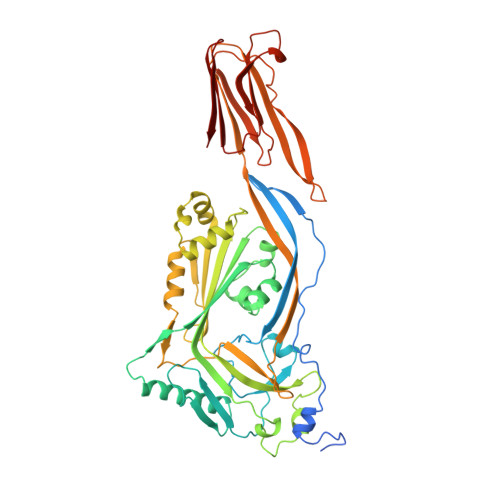Structure of a cholesterol-binding, thiol-activated cytolysin and a model of its membrane form.
Rossjohn, J., Feil, S.C., McKinstry, W.J., Tweten, R.K., Parker, M.W.(1997) Cell 89: 685-692
- PubMed: 9182756
- DOI: https://doi.org/10.1016/s0092-8674(00)80251-2
- Primary Citation of Related Structures:
1PFO - PubMed Abstract:
The mechanisms by which proteins gain entry into membranes is a fundamental problem in biology. Here, we present the first crystal structure of a thiol-activated cytolysin, perfringolysin O, a member of a large family of toxins that kill eukaryotic cells by punching holes in their membranes. The molecule adopts an unusually elongated shape rich in beta sheet. We have used electron microscopy data to construct a detailed model of the membrane channel form of the toxin. The structures reveal a novel mechanism for membrane insertion. Surprisingly, the toxin receptor, cholesterol, appears to play multiple roles: targeting, promotion of oligomerization, triggering a membrane insertion competent form, and stabilizing the membrane pore.
- The Ian Potter Foundation Protein Crystallography Laboratory, St. Vincent's Institute of Medical Research, Fitzroy, Victoria, Australia.
Organizational Affiliation:
















